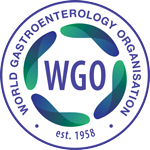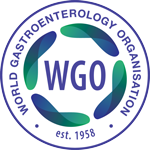Viral Hepatitis Elimination Program in Türkiye
Vol. 28, Issue 4 (December 2023)
 |
Suna Yapali, MD
Associate Professor of Gastroenterology
Acibadem University School of Medicine
Türkiye |
| |
|
In Türkiye, the prevalence of hepatitis B and C is 4.0% and 0.3-1.0%, respectively.1, 2 Hepatitis B surface antigen (HBsAg) seropositivity rates indicate more than three and a half million hepatitis B virus (HBV) carriers. However, only 12% of these HBV carriers are aware of their status.3
The World Health Organization (WHO) set targets to eliminate viral hepatitis as a public health risk by 2030. By this, 90% reduction in the risk of new infections, 80% of eligible people with chronic hepatitis B and C infections treated, and 65% reduction in hepatitis-related mortality were declared as goals to be achieved.4
Before the declaration of Global Health Sector Strategy (GHSS) on Viral Hepatitis by WHO in 2016; National Hepatitis Program developed by Turkish Ministry of Health included:5
- Hepatitis B vaccination program for newborns and children in 1998
- Development of the surveillance system and inclusion of acute hepatitis in the scope of compulsory notification
- Inclusion of hepatitis A vaccine in the childhood vaccination program in 2012
- Inclusion of nucleic acid test in the blood transfusion safety panel as well as serological tests
A study of 26,001 adult patients comparing the change of HBsAg-positivity rate in 20-year period found that HBsAg positivity in 1995-2002, 2003-2009, and 2010-2015 was 5.3% to 4.8% and 3.1%, respectively.6 The results of this study showed that National Hepatitis Program achieved a reduction in incidence of HBV infection.
After the declaration GHSS on Viral Hepatitis by WHO in 2016, the Turkish Ministry of Health defined a national strategy covering 2018-2023 to reach goals by 2030.7 The Turkish Viral Hepatitis Prevention and Control Program which included implementation of eight strategies was announced in 2018 (Table 1). Turkish Health authorities also collaborated with the Turkish Association for The Study of Liver and Viral Hepatitis Society (VHSD) for “Hepatitis C Elimination Roadmap Recommendations in 2018” (Figure 1).8 Furthermore, in 2020 they announced the “National Hepatitis B Elimination Roadmap.”9
Table 1. Strategies of Turkish Hepatitis Prevention and Control Program
- Raising awareness
- Increasing immunization
- Increasing surveillance programs
- Reducing viral transmission
- Increasing access to treatment
- Providing safe blood products
- Prevention of viral hepatitis transmisson among people who inject or use drugs
- Prevention of healthcare-associated transmission
|
Hepatitis C Elimination Roadmap in Türkiye
Public awareness activities were organized to address hepatitis C as an easily recognizable and treatable disease. Training activities by Provincial Health Directorate were developed to raise the contribution of family physicians orinternal medicine specialists for the diagnosis, treatment, and follow-up of hepatitis C.
Screening of patients with pre-existing liver disease, intravenous drug users, prisoners, liver and renal transplant recipients, hemodialysis patients, HIV-positive patients were prioritized. Population screening activities in regions with high HCV prevalance, referral of anti-HCV positive cases for treatment and follow-up, registration of anti-HCV positive donors in a national health informatic system and providing a software warning system of HCV positive patients before interventional/surgical procedures were planned.
Improvement of access to treatment by a direct referral chain to internists, gastroenterologists and infectious disease specialists was provided. Treatment of patients who inject drugs by on-site physicians is recommended if assignment of infectious disease or gastroenterology specialists is limited. Access of every patient, including immmigrants, to direct-acting antivirals were provided.

Figure 1. Hepatitis C Elimination Roadmap
Hepatitis B Elimination Roadmap in Türkiye
The goal of the Hepatitis B Elimination Roadmap was to stop the transmission of hepatitis B in
Türkiye in short-term, prevent the progression of the disease, improve the quality of life, and ensure the elimination of hepatitis B in the long term.
The project process consisted of five stages:
1. Review of current hepatitis B strategies and plans
2. Conducting preliminary interviews
3. Conducting workshops
4. Preparation of the Hepatitis B Elimination Roadmap within the scope of the National Hepatitis Elimination Program
5. Evaluation of National Hepatitis B Elimination Roadmap projects
The evaluation ofthe Viral Hepatitis Prevention and Control Program in Türkiye, conducted by the Ministry of Health, reported these activities which were completed by 2021:
- The Viral Hepatitis Educator Guide and educational slide sets were prepared and shared by the Ministry of Health in 2019.
- Before the pandemic, family physicians in the central part of Türkiye were trained. During the late phase of the pandemic, physicians in the southeast region of Türkiye had online training.
- Meetings were organized in various provinces to raise public awareness of hepatitis among the public, and posters were posted on billboards.
- The National Haemovigilance Guide for safe blood transfusion was updated in 2020.
In June 2022, the progress of the program was re-evaluated and following recommendations were made:
1. Prevention strategies should be prioritized.
2. Viral hepatitis awareness and screening should first be started by healthcare associate professionals working with doctors and nurses. Screening and training of healthcare professionals working at hospitals should be obligated.
3. From June 2022 to the end of 2022, face-to-face training activities in big cities were organized with the participation of 50-100 family physicians. Increasing HBV and HCV awareness and screening rate of high risk groups were the major goals of the training. The family medicine specialty associations should be identified as stakeholders and their support and participation is requested at the organization stage.
4. Learning efficacy after the training sessions by pre-test and post-test scores was evaluated.
5. Integration of an obligatory follow-up for HBsAg-positive individuals by National Health System will beplanned.
6. According to the Centers for Disease Control, absolute screening of adults is recommended in regions with a prevalence of more than 0.1%. The frequency of HCV in Türkiye is 0.3-1.0%.1,2 Therefore, anti-HCV and HBsAg should be screened in all individuals above the age of 18 and in younger high risk individuals.
7. Accurate and reliable surveillance data should be collected and handled by the Ministry of Health and used in national health policy strategies.
8. Collection of the screening data at a centralized hepatitis-specific e-disease management system.
9. An electronic identity card specific to the prevention of communicable disease could be designed in close collaboration between the General Directorate of Health Information Systems of the Ministry of Health and the Turkish Ministry of Health General Directorate of Public Health, Communicable Diseases and Early Warning Department. The proposed digital model could be tested in pilot projects before it is rolled out across the country.
Hepatitis B immunization with an actual rate of three doses in infants is 98% in Türkiye. The increase in awareness of family physicians will address the regional prevalance of hepatitis B. In
Türkiye, the annual pregnancy rate is around one million and HBsAg screenings during pregnancy is currently applied is an important screening tool. In addition, TASL and VHSD organize educational activities for the society and family physicians to encourage the lifelong follow-up of inactive HBV carriers.
Türkiye is a candidate for having the possibility of reaching the goals defined by WHO. Increased number of immigrants may change the demographics of viral hepatitis in the near future. However, increasing awareness of viral hepatitis, promoting screening and surveilance activities, and providing easy access to treatment and follow-up will facilitate the elimination of viral hepatitis.
References
1. Tozun N, Ozdogan O, Cakaloglu Y, Idilman R, Karasu Z, Akarca U, Kaymakoglu S, Ergonul O. Seroprevalence of hepatitis B and C virus infections and risk factors in Türkiye: a fieldwork TURHEP study. Clin Microbiol Infect. 2015;21:1020-1026.
2. Polaris Observatory HCV Collaborators. Global change in hepatitis C virus prevalence and cascade of care between 2015 and 2020: a modelling study. Lancet Gastroenterol Hepatol. 2022;7:396-415.
3. Toy M, Önder FO, Wörmann T, Bozdayi AM, Schalm SW, Borsboom GJ, van Rosmalen J, Richardus JH, Yurdaydin C. Age- and region-specific hepatitis B prevalence in Türkiye estimated using generalized linear mixed models: a systematic review. BMC Infect Dis. 2011;11:337.
4. World Health Organization. Global Health Sector Strategy on Viral Hepatitis 2016-2021 [Internet]. (cited 2022 Jul 30). Available from:https://apps.who.int/iris/bitstream/handle/10665/246177/WHO-HIV-2016.-eng.pdf
5. Akarca US, Baykam N, Guner R, Gunsar F, Idilman R, Kaymakoglu S, Koksal I, Tabak F, Yamazhan T. Viral Hepatitis Journal 2022;28(2):47-54.
5. Y, Sağlam F, Bölükbaş FF, Bölükbaş C, Öztürk R. Seroepidemiology of Hepatitis B Virus Infection in İstanbul: A 20-year Survey. Viral Hepat J. 2016;22:88-91.
6. T.C. Sağlık Bakanlığı. Türkiye Viral Hepatit Önleme ve Kontrol Programı 018-2023 [Internet]. 2018 (cited: 2022 Jul 30). Available from: https://hsgm.saglik.gov.tr/depo/birimler/Bulasici-hastaliklar-db/duyurular/Turkiye_Viral_Hepatit_Onleme_ve_Kontrol_Programi/Turkiye_Viral_Hepatit_Onleme_ve_Kontrol_Programi_TR.pdf
7. Akarca US, Aygen B, Bodur H, Güner HR, İdilman R, Kaymakoğlu S, Iazarus I, Örmeci N, Robbins S, Tözün AN. Türkiye’de Hepatit C Eliminasyonu Yol Haritası Önerileri ve Çalıştay Raporu; 2018.
8. İnkaya AÇ, Özaydın AN, Mardin D, Ünalmış Duda H, Köksal İ, Çelen MK, et al. Ulusal Hepatit B Eliminasyon Yol Haritası; 2018.



